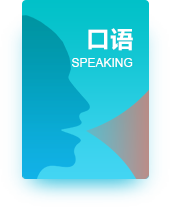作为雅思考生,我们读外刊要有一定的目的性,不仅仅是为了扩大我们的阅读面,还要有意识地针对雅思考试,提高自己的水平。希望大家不帮是看源文内容,更要对文中注释加以学习消化,希望对大家有帮助!

Most of our internal clocks are a little bit slow, and in the absence of consistent light cues — like when you travel across time zones — the pacemaker cells in your body want to have a longer day, said Michelle Girvan, a physicist at the University of Maryland who worked on the model published in the journal Chaos on Tuesday.
马里兰大学的物理学家米歇尔‧葛文(MichelleGirvan)参与了建构这套模型的工作,研究成果周二时在《混沌》(Chaos)期刊上发表。葛文表示,我们体内大部分生物钟都稍微慢些,在没有持续稳定的光源信号时,比如跨时区旅行的时候,体内的节律细胞就会想让一天更长一些。
【经典句式】
internal clock生物钟
in the absence of 缺少
consistent一致的
cue信号
pacemaker节律调节者
publish发表
journal期刊
chaos混沌
“This is all because the body’s internal clock has a natural period of slightly longer than 24 hours, which means that it has an easier time traveling west and lengthening the day than traveling east and shortening the day,” Dr. Girvan said.
“这全是因为人体内建时钟的自然周期比24小时稍长一些,也就是说,在向西旅行、导致一天的长度拉长时,感觉会比向东旅行导致一天缩短时更好受一些。”
【经典句式】
internal clock生物钟
lengthen拉长
shorten缩短
Jetlag can be resolved by matching your internal clockto your destination’sclock as soon as possible. (There’s an app for that). So the researchers built a model that considers all of your pacemaker cells, how sensitive you are to light, the brightness of light, multiple time zones and people’s slightly off kilter internal clocks. They hope the model offers a simple way of explaining how a typical body might recover from jet lag with no intervention. That is, how its pacemaker cells try to synchronize in the presence of different light cues (like sunshine, artificial light or dim light from clouds) when arriving at various time zones three hours, six hours, nine hours and 12 hours away either to the east or west.
要解决时差问题,你可以让生物钟尽快调整到与目的地的时间同步(有个手机应用可以帮忙)。所以研究人员建立了一个模型,将你的节律细胞、你对光线的敏感度、光线强度、跨越时区的多寡,以及我们稍稍失准的体内时钟全都纳入考虑。他们希望这个模型可以提供一个简洁的方式,来解释正常人的身体如何在没有外在干预的情况下,把时差倒回来。也就是说,我们在抵达与出发地相差3小时、6小时、9小时、12小时的目的地之后,不论旅程是向东或向西,身体节律细胞是如何根据新地点不同的光线信号(比如阳光、人造光,或云层筛落的黯淡光线)进行同步的。
【经典句式】
jetlag时差
resolve解决
match匹配
internal clock生物钟
destination目的地
app手机应用
pacemaker节律调节者
sensitive敏感的
multiple多个的
timezone时区
slightly off kilter稍稍失准的
recover from恢复
intervention干预
That is, … 也就是说,……
synchronize同步
cue信号
sunshine阳光
artificial light人造光
dim黯淡的
arrive at到达
The model confirms what was already known: Generally, westward recovery is easier than eastward. But it also helps us understand that flying across more time zones can sometimes beeasier than traveling across fewer.
这个模型证实了我们已知的事实:一般来说,向西飞行导致的时差会比向东飞行的时差更容易克服。但它也让我们了解到,有时跨度大的时差反而会比差距较小的时差更容易适应。
【经典句式】
confirm证实
recovery恢复
time zone时区
本文观点选自“闻夕雅思每天雅思”,不代表本站立场,如有任何问题,请联系小站进行修改或删除。
相关资料
免费公开课
相关推荐
-
雅思学术 词汇有那些
2024-01-25![雅思学术 词汇有那些]()
-
雅思真题精练方法
2024-02-27![雅思真题精练方法]()
-
10分钟刷一篇真题,利用好碎片时间也能提分
APP专享![10分钟刷一篇真题,利用好碎片时间也能提分]()
-
雅思词汇要怎么学好
2023-11-01![雅思词汇要怎么学好]()
-
雅思短文答题技巧有哪些
2023-11-30![雅思短文答题技巧有哪些]()
-
雅思学习:如何提高学习效率和成果?
2023-12-29![雅思学习:如何提高学习效率和成果?]()
-
雅思必备词汇和语法有哪些
2023-11-24![雅思必备词汇和语法有哪些]()
-
雅思专用话题怎么写好
2023-11-29![雅思专用话题怎么写好]()
-
雅思雅思想要考到八分 有什么备考技巧
2023-11-01![雅思雅思想要考到八分 有什么备考技巧]()
-
雅思学术词汇有哪些重点词汇
2023-12-05![雅思学术词汇有哪些重点词汇]()
-
新手小白如何自学雅思词汇
2024-01-05![新手小白如何自学雅思词汇]()
-
雅思衔接词的例句 有哪些
2023-11-07![雅思衔接词的例句 有哪些]()
-
雅思读书话题有哪些
2023-11-24![雅思读书话题有哪些]()
-
雅思婚姻话题怎么写
2023-12-12![雅思婚姻话题怎么写]()
-
雅思怎么自己备考 有什么方法
2023-11-16![雅思怎么自己备考 有什么方法]()
-
雅思填空题技巧和方法有哪些
2023-10-08![雅思填空题技巧和方法有哪些]()
-
雅思词汇考哪些
2023-09-06![雅思词汇考哪些]()
-
雅思话题逻辑分析怎么写
2023-10-30![雅思话题逻辑分析怎么写]()
-
雅思中方位词汇有哪些
2023-11-29![雅思中方位词汇有哪些]()
-
雅思短语句子听写技巧总结
2023-10-30![雅思短语句子听写技巧总结]()
-
怎么缓解雅思备考焦虑的情绪
2023-10-25![怎么缓解雅思备考焦虑的情绪]()




















